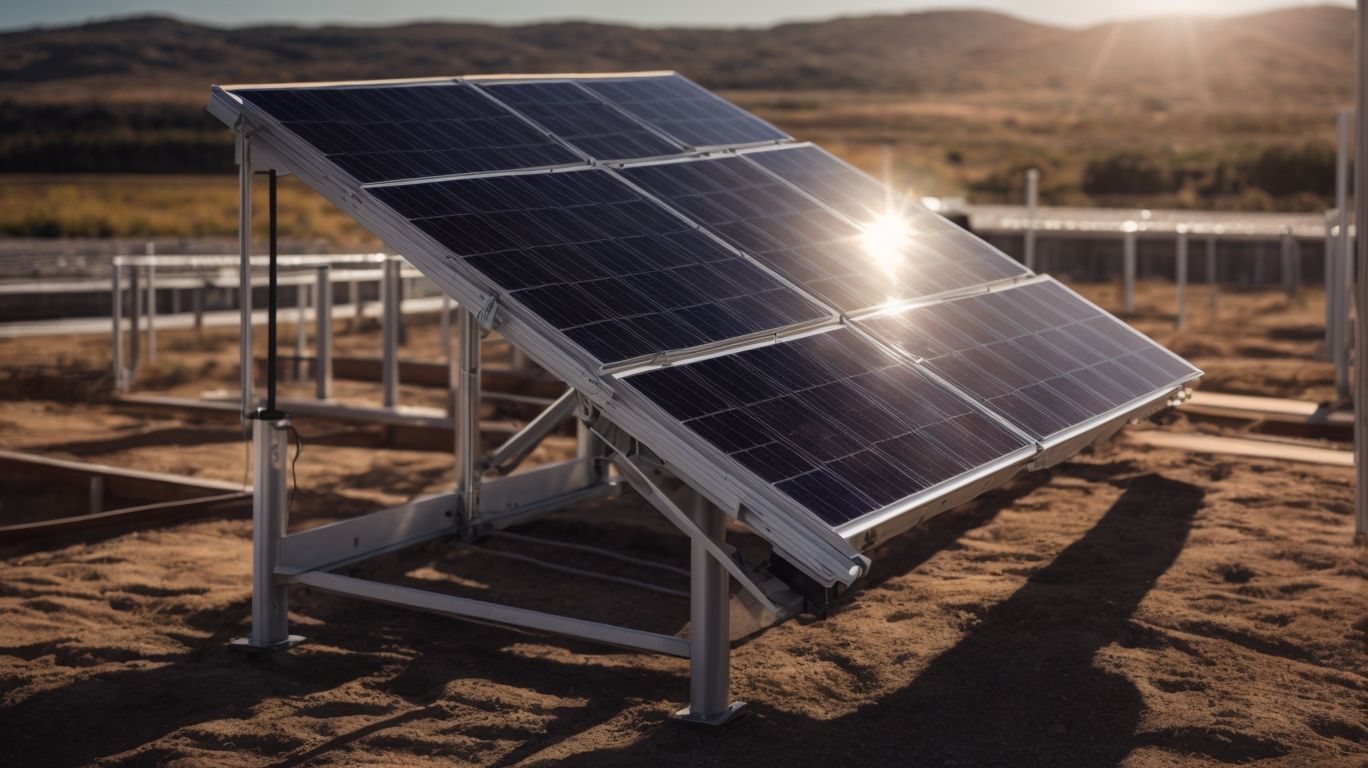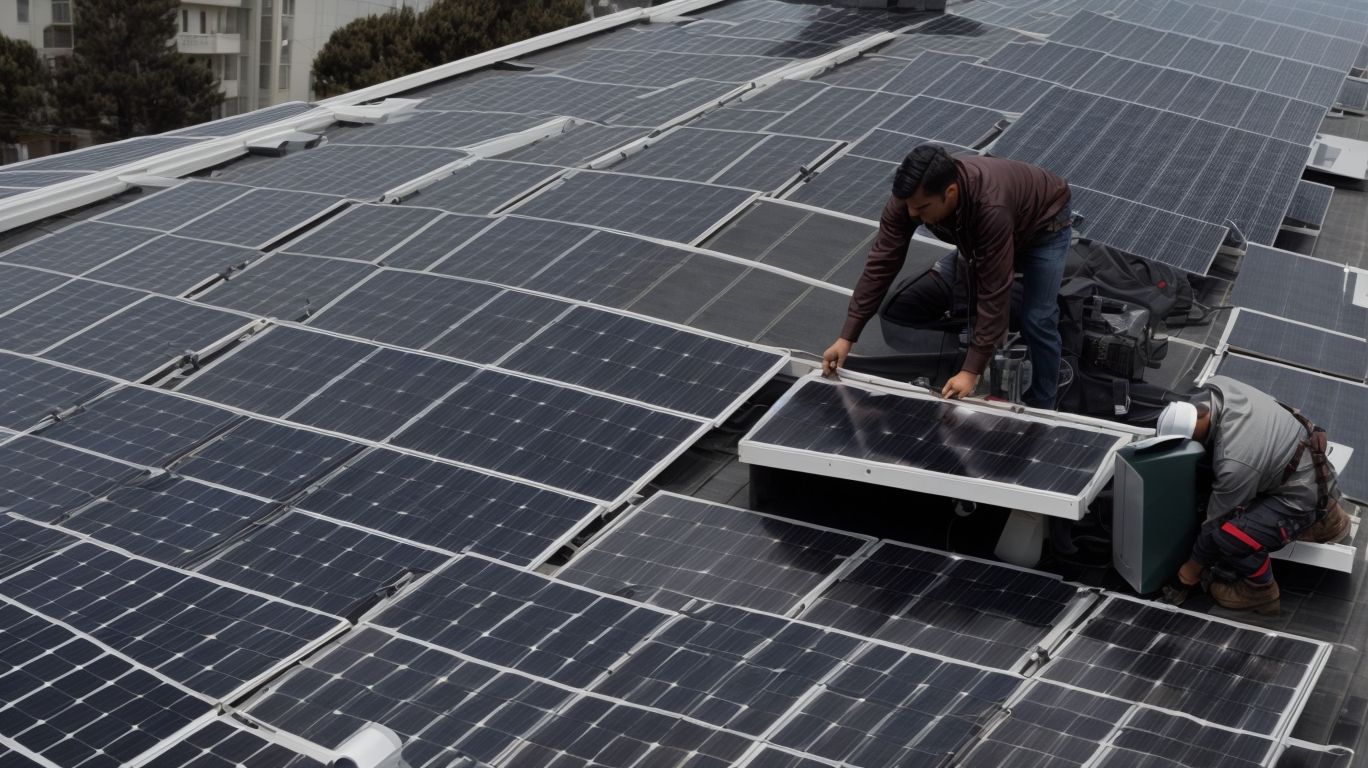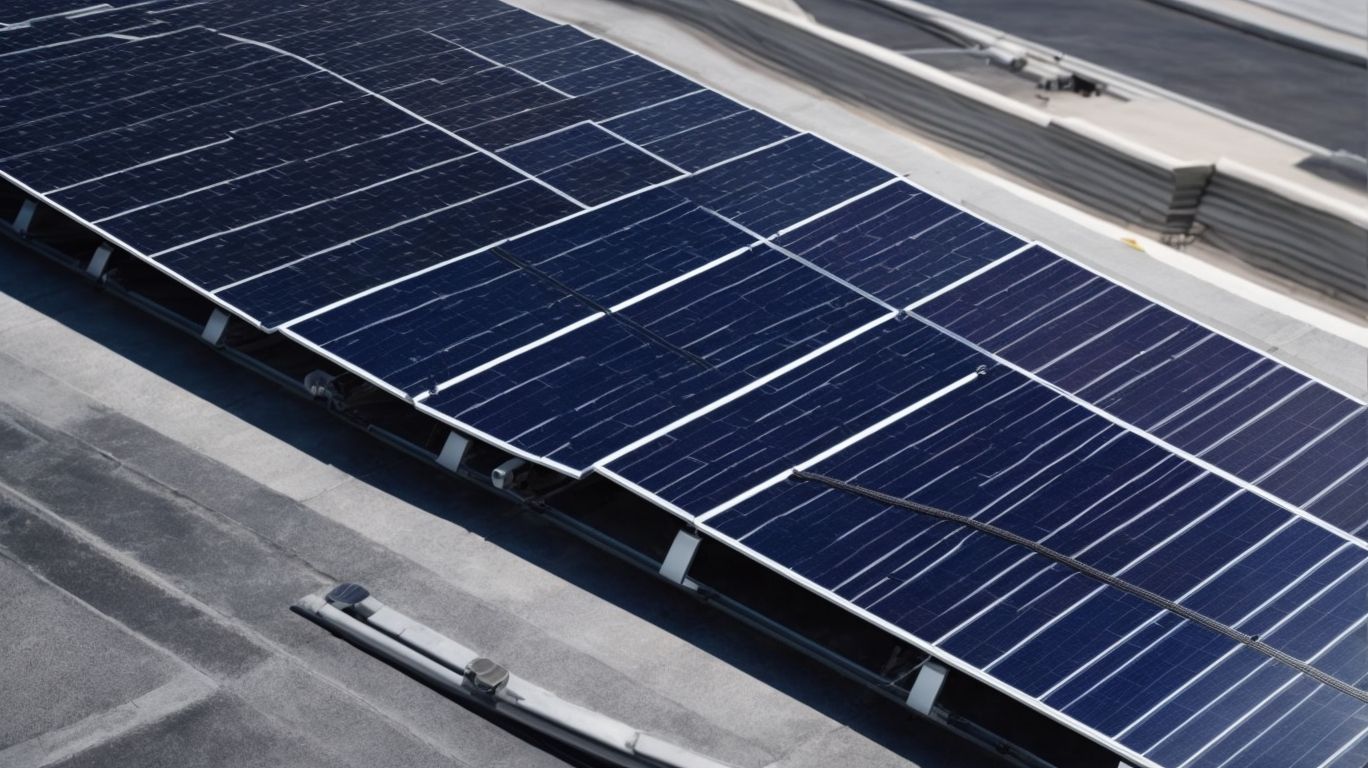
A Glossary of Solar Panel Structural Support Terminology
Have you ever wondered what goes into supporting solar panels on rooftops or in solar farms?
We explore the world of solar panel structural support, from the different types and components to the materials used and factors to consider when choosing the right support.
Whether you’re a solar enthusiast or just curious about renewable energy, this glossary of solar panel structural support terminology will shed light on this important aspect of solar energy systems.
Let’s dive in!
What Are Solar Panels?
Solar panels, also known as photovoltaic (PV) modules, are devices that convert sunlight into electricity, providing a sustainable source of clean and renewable energy.
These panels play a crucial role in the generation of electricity by harnessing the sun’s energy through the photovoltaic effect. The PV modules comprise multiple solar cells made of semiconducting materials, such as silicon, which absorb photons from sunlight and release electrons, creating an electric current. This process, known as the photovoltaic effect, allows solar panels to produce electricity without emissions or pollution, making them an environmentally friendly energy solution.
By utilizing solar panels, individuals and businesses can reduce their reliance on fossil fuels and contribute to a more sustainable future powered by renewable energy sources.
What Is Solar Panel Structural Support?
Solar panel structural support refers to the framework and mounting hardware designed to securely install solar panels, ensuring proper alignment and stability for optimal performance.
These support structures play a crucial role in the overall functionality and longevity of solar panel systems. Racking systems provide a sturdy foundation by anchoring the panels to the ground or roof, while mounting hardware secures each panel in place. By maintaining the panels’ position, the structural support helps maximize sunlight absorption, ultimately increasing energy production. These components aid in protecting the panels from external factors such as strong winds and heavy snow loads, safeguarding their integrity over time.
What Are the Different Types of Solar Panel Structural Support?
Solar panel structural support can vary based on installation requirements, with options including roof attachment systems, ground mounting structures, and ballasted supports.
- Roof attachment systems are commonly used for residential installations, where solar panels are secured directly to the roof structure using brackets or rails.
- Ground mounting structures, on the other hand, involve the use of support structures anchored into the ground to hold the panels in place.
- Ballasted supports use weighted blocks to provide stability without the need for penetrating the roof or ground, making them a versatile option for temporary installations or on buildings with weight restrictions.
What Are the Components of Solar Panel Structural Support?
The components of solar panel structural support include racking systems, mounting brackets, grounding systems, and penetration methods, all essential for the secure installation and alignment of solar panels.
- Racking systems serve as the backbone of the solar panel array, providing the structure on which the panels are mounted. These systems are designed to withstand the weight of the panels and varying weather conditions.
- Mounting brackets play a crucial role in securely fastening the panels to the racking system, ensuring they are held in place.
- Grounding systems are vital for electrical safety, redirecting any potential electrical currents in case of a fault.
- Penetration techniques are used to attach the racking system to the roof or ground, ensuring stability and durability of the entire solar panel setup.
Racking Systems
Racking systems for solar panels consist of back rails that support the panels and ensure proper module spacing for efficient energy production.
The back rails in racking systems play a crucial role in enabling the solar panels to be securely mounted at the optimal angle for capturing sunlight. The back rails also provide structural integrity to the entire system, ensuring stability and longevity.
Proper module spacing is essential to prevent shading between panels, allowing each panel to operate at its maximum capacity. The alignment of the panels within the racking system is key to maximizing energy output by ensuring that sunlight is captured most effectively throughout the day.
Mounting Brackets
Mounting brackets, including mid clamps and end clamps, securely fasten solar panels to the racking system, ensuring stability and alignment.
Mid clamps play a crucial role in holding the middle section of solar panels in place on the racking structure, while end clamps secure the outer edges, providing extra reinforcement. By distributing the weight evenly and preventing movement during strong winds or other adverse weather conditions, these specialized components contribute to the overall safety and longevity of the solar panel array. The use of high-quality mid clamps and end clamps ensures that the panels remain properly oriented to maximize energy absorption and efficiency.
Flashing
Flashings are components used to seal penetrations in the roof or structure, preventing leaks and ensuring a watertight installation for solar panels.
They play a crucial role in protecting the vulnerable areas where solar panel mounts penetrate the roof, such as mounting brackets, wiring, and conduits. By creating a weatherproof barrier around these areas, flashings help to prevent water from seeping into the underlying structure and causing damage. Sealants are often used in conjunction with flashings to provide an additional layer of protection against moisture infiltration. This combination ensures that the solar panel system is securely installed and shielded from potential water-related issues, ultimately increasing its longevity and performance.
Grounding Systems
Grounding systems in solar panel installations include grounding lugs and wires that ensure electrical safety, protecting the system from overloads and faults.
Grounding lugs are vital components that establish a direct path for electrical currents to flow into the earth, preventing potential shock hazards and providing a stable reference point for the system. Grounding wires act as conductors, aiding in dissipating any excess electricity that could disrupt the system’s functionality.
Proper installation and maintenance of these grounding components are crucial to safeguarding not only the solar panels themselves but also the surrounding structures and individuals working near the system. By grounding effectively, the risk of electrical malfunctions and accidents is significantly reduced in solar panel setups.
What Are the Different Materials Used for Solar Panel Structural Support?
Solar panel structural support can be constructed from various materials such as aluminum, steel, and wood, each offering unique properties and benefits for different installation scenarios.
- Aluminum is a popular choice due to its lightweight nature, making it easier to handle during installation and reducing the overall weight load on the roofing structure. It is also known for its corrosion resistance, ensuring longevity and minimal maintenance requirements.
- Steel, on the other hand, is prized for its exceptional strength, making it ideal for larger installations or areas prone to high winds and snow loads.
- Wood, while less common, can provide a more natural aesthetic and blend well in certain architectural designs.
Aluminum
Aluminum is a popular choice for solar panel structural support due to its lightweight nature and corrosion-resistant properties, making it ideal for rooftop installations.
Its lightweight construction significantly reduces the overall weight load on rooftops, making it easier and more cost-effective to install and maintain solar panels. Aluminum’s resistance to corrosion ensures longevity and durability, even in various weather conditions. This metal’s versatility allows for easy customization and adaptation to different structures, providing a reliable and efficient support system for solar panels. Its malleability and strength also make it a preferred material for curved or angled installations, enhancing the efficiency of solar energy production.
Steel
Steel is known for its strength, durability, and heavy-duty applications, making it a reliable choice for solar panel structural support in demanding or high-load scenarios.
The inherent robustness of steel provides resistance against harsh weather conditions, ensuring long-term stability for solar panels. Its high tensile strength allows steel structures to withstand heavy loads without compromising structural integrity, offering a secure foundation for solar installations. Steel is recyclable, contributing to sustainability in the renewable energy sector. The versatility of steel in fabrication processes enables customized designs to suit specific project requirements, such as varying panel sizes and weights.
Wood
Wood offers a natural and renewable option for solar panel structural support, providing a cost-effective solution for installations that prioritize sustainability and aesthetics.
Its inherent strength and durability make it a reliable choice for long-term use, with the added benefit of being a carbon-neutral material. Wood’s versatility allows for easy customization to fit various design requirements, blending seamlessly into both residential and commercial settings.
Its low carbon footprint during production and disposal stages aligns perfectly with eco-friendly initiatives. By utilizing wood for solar panel structures, not only are environmental benefits maximized, but also the overall visual appeal is enhanced, creating a harmonious balance between function and form.
What Are the Factors to Consider When Choosing Solar Panel Structural Support?
Selecting the appropriate solar panel structural support involves considering factors such as roof type, climate conditions, panel weight, and cost-effectiveness to ensure a safe and efficient installation.
Roof compatibility is a crucial aspect to take into account when deciding on the structural support for solar panels. Different roofs, such as flat roofs or pitched roofs, may require specific mounting systems.
Weather considerations play a significant role in determining the durability and longevity of the system. Factors like wind load, snow load, and hail resistance need to be factored in to ensure the panels can withstand adverse weather conditions.
Panel specifications, including size and orientation, also inform the choice of support structure. Budget constraints further influence the selection, as different mounting options vary in cost and installation complexity.
Roof Type and Slope
The roof type and slope play a significant role in determining the suitable structural support for solar panels, with considerations for flat or pitched roofs impacting the installation method and hardware requirements.
For flat roofs, the challenge lies in ensuring proper angling and mounting to optimize sun exposure since they lack natural slopes. Hardware compatibility becomes crucial to secure panels effectively on these surfaces.
In contrast, pitched roofs provide a built-in advantage as their angle often aligns well with solar panel requirements, making installation more straightforward. The stability of the panels differs between roof types, with pitched roofs offering better natural drainage for rain and snow, reducing the risk of water accumulation affecting the panels’ longevity and performance.
Climate and Weather Conditions
Climate and weather conditions, including wind load, snow load, and seismic considerations, are critical factors in selecting the appropriate structural support for solar panels, ensuring resilience against environmental stressors.
It is essential to understand how these factors can impact the durability and performance of solar panel systems.
High wind speeds can exert significant force on the panels, requiring sturdy mounting systems to prevent damage or dislodgement.
Similarly, heavy snow loads can pose challenges, necessitating robust support structures to bear the weight and prevent structural failure.
Seismic considerations are crucial for regions prone to earthquakes, demanding specialized mounting solutions designed to withstand ground movement and vibrations.
By carefully considering these factors, solar panel installations can be optimized for long-term efficiency and reliability.
Weight and Size of Solar Panels
The weight and size of solar panels, along with considerations for module spacing and tilt angle, affect the structural support requirements, influencing the choice of racking systems, mounting hardware, and installation method.
Optimal spacing between solar panels is essential to prevent shading, ensuring maximum energy production. The tilt angle of panels must align with the local latitude to capture sunlight efficiently throughout the year. Proper hardware compatibility is crucial for securing panels in place, preventing damage from wind uplift or seismic forces. By carefully evaluating these factors, installers can design a robust support system that enhances the longevity and performance of the solar array.
Cost and Durability
Cost-effectiveness and durability are key considerations when choosing solar panel structural support, balancing material expenses with long-term reliability and performance requirements.
It is essential to strike a balance between upfront costs and long-term benefits when selecting the structural support for solar panels. Opting for lower-cost materials initially might seem financially attractive, but investing in high-quality, durable materials can lead to greater savings and efficiency over the system’s lifespan. The choice of materials directly impacts the performance and longevity of the solar panel system, making durability a crucial factor to prioritize. By ensuring the structural support is robust and long-lasting, you can maximize the efficiency and effectiveness of your solar energy setup.




No Comments